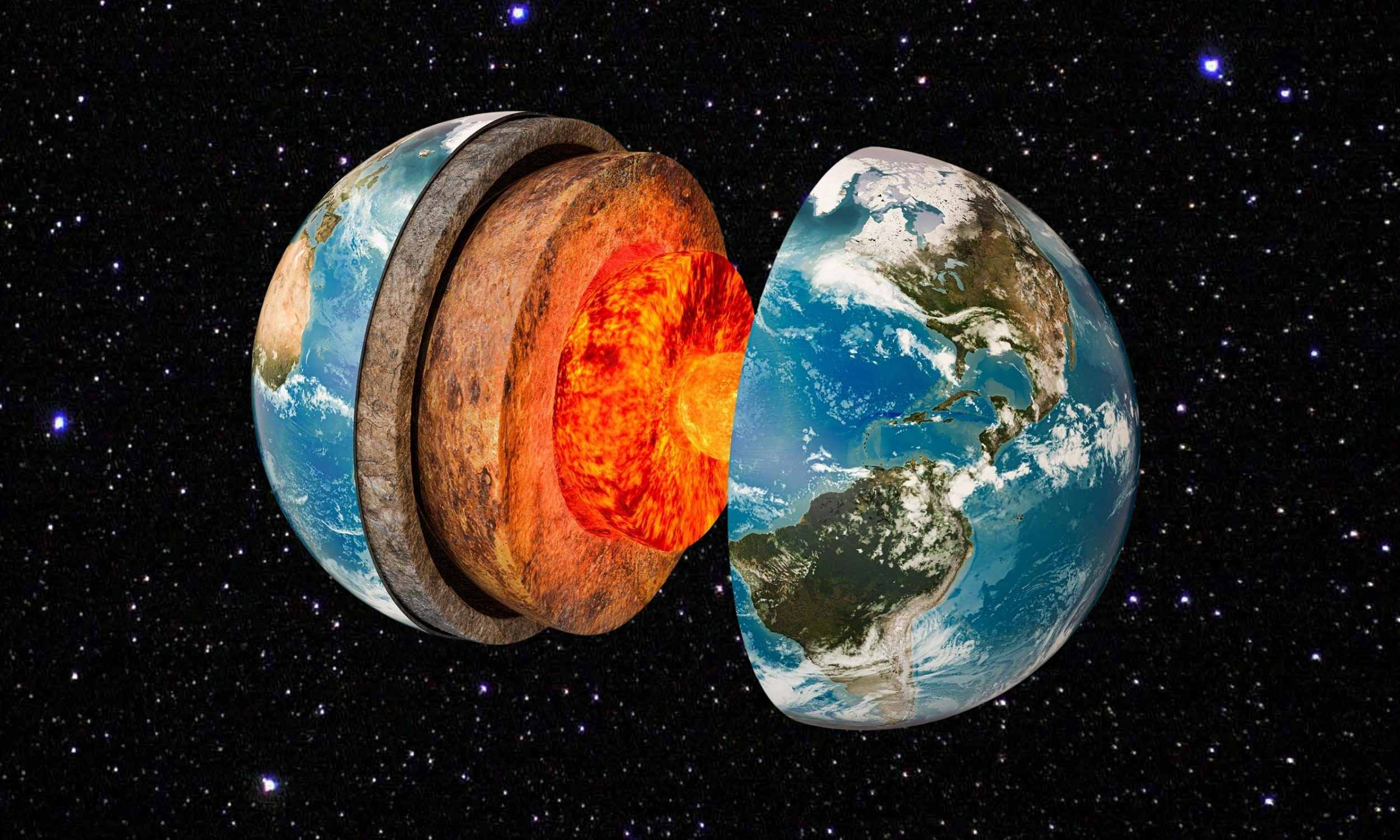Some of the most familiar atoms in the air above our heads appear to vanish when scientists audit Earth’s interior. Geochemists have spent decades tracing nitrogen’s trail yet always come up billions of tons short.
Earth’s rocky shell, the bulk silicate Earth (BSE), holds only one to five parts per million of nitrogen, a tally wildly below the cargo delivered by meteorites, say planetary physicists Shengxuan Huang and Taku Tsuchiya of Ehime University in a recent study.
Earth has a nitrogen gap
The nitrogen gap also skews the ratios between carbon, nitrogen, and argon, leaving Earth with a super‑chondritic chemical fingerprint that standard accretion models cannot match.
Solving the puzzle matters because those ratios control everything from mantle redox to atmospheric pressure.
Earlier studies blamed violent impacts that might have blasted nitrogen into space or suggested the planet formed from odd, nitrogen‑poor building blocks.
Neither idea fit every observation, especially the tight link between carbon and argon abundances.
Huang and colleagues wondered whether the answer lay not in the sky but in the metal heart of the planet.
Their hunch turned on how elements swap partners when molten rock and liquid iron separate during core‑mantle differentiation.
Supercomputers inside a magma ocean
To test it, the team recreated a primordial magma ocean, a globe‑spanning sea of lava that blanketed early Earth.
They used quantum‑level simulations to push virtual samples to 135 gigapascals and 9,000°F, conditions matching depths well below today’s mantle.
The code tracked each nitrogen atom as it chose between silicate melt and liquid iron, tallying a mathematical partition coefficient for every depth.
At 60 gigapascals (GPa), extreme pressure found deep inside the Earth, nitrogen was over 100 times more likely to bond with iron than with rock.
“Under the intense heat and pressure of a deep magma ocean, nitrogen became a ‘metal lover’,” said Huang.
The strong preference rose even higher at core‑forming depths, then leveled off, revealing a curved, not linear, relationship with pressure.
Pressure as matchmaker
The curvature solves a long‑standing lab conflict in which some high‑pressure experiments saw nitrogen favor metal while others did not. Those tests straddled the inflection point on the curve, so each captured a different slice of the trend.
Because the effect strengthens rapidly between 20 and 60 GPa, only a deep magma ocean can drain enough nitrogen into the core to match today’s mantle measurements.
Shallow oceans, by contrast, would leave too much nitrogen behind and pull Earth’s volatile ratios in the wrong direction.
Calculations show that a magma ocean reaching 60 GPa would lock roughly eighty percent of the planet’s nitrogen inside the core before the first crust ever solidified. The residual mantle concentration lands squarely in the observed one‑to‑five‑ppm window.
The simulations explain the atomic gymnastics behind the preference. Rising pressure breaks nitrogen’s bonds with itself and hydrogen, allowing single atoms to slip into gaps between iron atoms where they behave almost neutrally.
Inside silicate melt, however, high pressure forces nitrogen to bond with silicon as nitride ions, making it act like a charged outsider in an oxygen‑rich network. The contrasting chemical states tip the energetic scales decisively toward the core.
Adding sulfur or silicon to the metal cuts nitrogen’s affinity roughly in half, yet even an alloy doped with light elements still grabs the lion’s share. That robustness makes the core a dependable nitrogen vault throughout Earth history.
Carbon and argon tag along
Carbon shows subtler metal attraction. Laboratory experiments find metal‑silicate partition coefficients for carbon that swing from tens to above a thousand depending on temperature and oxygen fugacity.
Nitrogen’s coefficient, by contrast, rockets to several hundred under the same conditions.
Argon cares little for iron, preferring to stay either in silicate melt or in an atmosphere if one exists. This hierarchy (nitrogen > carbon > argon) naturally inflates Earth’s atmospheric 36Ar/N ratio while boosting its mantle C/N figure, without invoking exotic loss processes.
The model therefore reproduces two independent geochemical puzzles with one physical mechanism: deep core segregation in a thick magma ocean.
Clues from mantle chemistry
Modern basalts erupting at mid‑ocean ridges still record the aftermath. Their nitrogen‑to‑argon ratios hover near chondritic values, a hint that the upper mantle has stayed nitrogen‑poor and argon‑moderate since the Hadean.
Diamonds mined from cratonic roots occasionally trap tiny blebs of iron nitride, mineralogical breadcrumbs that support a deep nitrogen transfer early in Earth’s life. Each inclusion whispers that some nitrogen did indeed ride metal downward.
Geochemists reached a similar conclusion back in 2015 by tallying global isotope budgets. Scientists have confirmed that the majority of the planetary budget of Nitrogen is in the solid Earth.
Earth’s nitrogen and exoplanets
Keeping just a sliver of nitrogen in the mantle turned out to be a sweet spot. Too much core sequestration would starve the atmosphere, while too little would upset carbon balance and maybe climate stability.
The work therefore tightens the range of interior conditions that can yield a clement surface, a useful guide as astronomers weigh exoplanet habitability.
Planets that form quickly and differentiate deeply may need later recycling to deliver enough nitrogen for life’s molecules.
Earth pulled off that tightrope act, but only just. Understanding how it happened helps scientists decode not only our own planet’s past but the prospects of rocky worlds scattered across the galaxy.
The study is published in Earth and Planetary Science Letters.
—–
Like what you read? Subscribe to our newsletter for engaging articles, exclusive content, and the latest updates.
Check us out on EarthSnap, a free app brought to you by Eric Ralls and Earth.com.
—–
